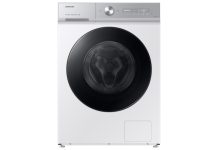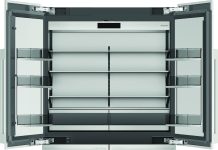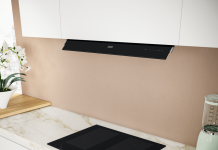A Pick and Place machine is the second phase in an assembly line. It follows the first stage, that is to say the silk-screen deposition of the solder paste (stencil printer) and it precedes the reflow for forming solder joints.
The simplest form of the pick and place operation is the manual one, where the operator manually picks a component and, with the aid of a pair of tweezers, places it on the board and then solders it. This method works well if you operate on occasional boards.
Various variables should be considered for prototypes, pre-series or zero batches, such as the size and the number of components that influence the necessary time to assemble the board. Fine-pitch components are another problem, because accuracy and repeatability are demanded. The human factor plays its role because the work, extending times, becomes boring and sometimes stressing.
Printed circuit boards change in sizes and complexity, a comparison in this activity is how many components can be positioned per each hour of work, or CPH. By means of pure manual positioning, it allows placing about 50cph; it needs tweezer, a vacuum suction pipette, a magnifying lens and obviously a soldering station.
A manual pick and place system is desirable for small operations that are expected to grow, increase manufacturing volumes (about from 70 to 130 cph) and at the same time improve quality, reducing re-machining. The positioning accuracy is still conditioned by the operator’s skills, but it offers several advantages:
less operator’s fatigue, fewer positioning errors and more precision compared to pure manual skills, better output and repeatability.
A manual P&P uses a plane for the PCB positioning, a X, Y, Z motion system and θ (rotation) of the pick and place head.
It is generally provided with ergonomic devices to relieve the operator’s fatigue.
As an option, it is possible to mount a dispenser of soldering paste and glue, which can be applied before positioning the component on the board, so avoiding the use of silk-screening and of stencil. In the vast majority of cases, it is possible to buy manual P&P with the only base configuration and desirable options can be added afterwards, as needed.
They include component trays, feeder for components in tapes of various sizes and board supports.

Pick & place SMT 3000
For the manufacturing of prototypes and small series, the pick & place SMT 3000 by Bungard, represented by ELMI, allows handling efficiently SMD components. The system is modular and can be configured for various uses, it performs the complete process, starting from the dispensing of the soldering paste (or of the glue) up to the positioning of the various components.
The precise sliding guide of the assembling head aids to position SMD components with accuracy. When the pipette comes into contact with components, the vacuum automatically switches itself and when it places them in the relative pads, it switches off. The vacuum management is adjustable, it alleviates and accelerates the extraction of components, especially from bulk goods containers and when mounting MELF (metal electrode leadless face) components.
The dispensing system is simple, it is based on the time-pressure principle; the system automatically starts the dispensing process as soon as the dispensing needle gets in touch with the PCB. The syringe is positioned vertically whereas the dispenser’s needle is slightly slanted.
Three different dispensing times are available for the deposition of the soldering paste (or of the glue) on different sizes of pads, times can be selected directly in the dispenser menu. Individual times can be pre-set as required. In addition to solder paste and glue other fluids can be dispensed, like thermally conductive pastes.
By means of a camera fixed directly to the assembly head, you can view the entire pick & place process enlarged on a monitor.
The dual LED-light of the pick and place area can be integrated optionally. The LEDs are placed on both sides of the nozzle and enable the constant and permanent lightening under the assembling head.

This integration into the control mode of the Manipulator allows the menu routed activating – depending on application.
All models are equipped with a universal circuit board holder by standard for single- or double-sided PCBs. Elastic holding fingers are adjustable and hold the board in place. Large PCBs can be handled on demand. Customer-specific holders can be adapted or realised directly at Bungard plant.
The system enables the feeding of components in tapes and of loose components.
The manual carousel is antistatic and provided with 45 shelves to feed loose components in a comfortable way, while tape feeders allow feeding, through rolls, large amounts of standard-size components. While removing the cover-tape (the transparent film that keeps components in their seat), the tape is automatically fed and the components which should be placed next, are revealed.
The pick and place SMT 3000 can be also equipped with feeders for small portions of tape; this kind of feeder can manage single strips, permitting the picking of components directly from the tape, without needing to decant them into bulk containers first.
Bulk containers, patented by Bungard are also available and they provide resistors, capacitors and integrated circuits out of small containers.

Reflow
There are various reflow methods to make solder joints in controlled manner.
The simplest heating form is carried out by conduction, i.e. through contact with a heated surface, for instance with the soldering system. The other heating methods are typically carried out inside a chamber and are based on different heating methods: convection, infrared and steam phase.
In convection, the assembled boards are subjected to the action of heated air that releases its heat, so melting the alloy. In IR reflow, lamps (or heating elements) release the necessary heat for reflow. The steam phase reflow uses a technical fluid with a specific boiling point (240° C), the steam generated comes into contact with the board and transfers its heat to it, so melting the soldering paste.
HA06 model by Bungard is a solder oven for SMD components with full convection forced air during the preheat stage; shifting to the reflow stage, the heating is performed by the joint action of hot air and quartz lamps (IR). Lamps are needed to achieve a short ramp speed. Once the reflow set point is reached, the lamp power will be reduced to a minimum. At this point, 85% of the thermal energy is provided by the hot air flow.
This feature makes the oven suitable for soldering big SMD components and components with pads positioned under the package like BGA and QFN, achieving qualitatively high results.
The maximum power reaches 3650 W, with two heating zones controlled by microprocessor; the heating and stabilization time is about 8 minutes, with adjustments that can be set in the following intervals:
• Preheat time: 0 – 999 sec.
• Preheat temp: 60 – 260°C
• Reflow time: 0 – 999 sec.
• Reflow temp: 90 – 300°C
On boards with maximum size of 300 x 370 mm, applications range from the pure SMD to hybrid boards with pin-in-paste technology. Optionally, the possibility of using nitrogen with relative flow control.
HotAir 3000 oven uses highly efficient infrared heating elements and it is provided with various thermocouple temperature sensors. The joint activity of sensors and of the microprocessor allows achieving a very precise temperature curve of the reflow process and very uniform temperature in the respective sections.
Five are the phases that can be programmed by time (00:00 – 99:59 sec) and temperature (from 60 – 300°C):
• Preheat
• Heat
• Soldering
• Holding
• Cool down

This model is equipped with a broad display, the intuitive menu browsing is controlled by a membrane keyboard; the oven is equipped with automatic error detection with issue of alarm messages. The software of the operating system is in English. It is suitable for soldering small SMT series, but also for research, development and prototyping applications. It relies on good insulation that reduces energy consumptions and enables an optimal operation, while keeping temperature constant, as programmed.



